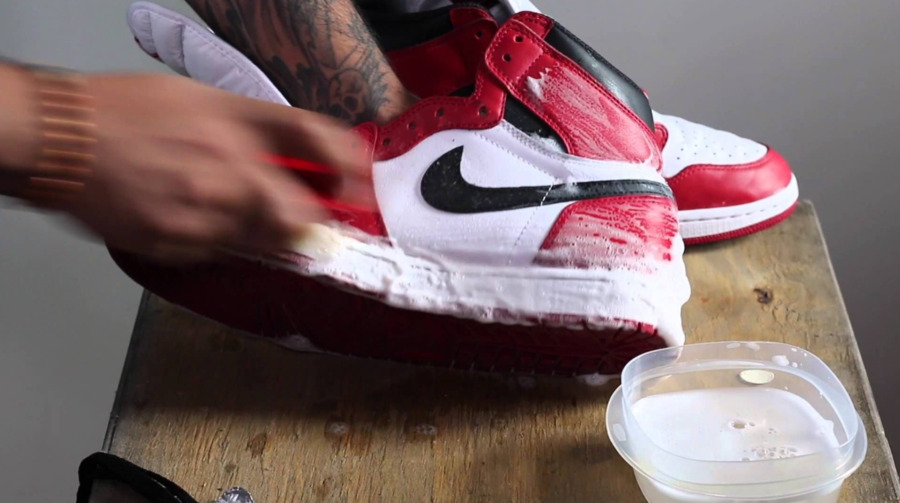Shoe care has evolved significantly over the centuries, transitioning from rudimentary cleaning methods to sophisticated, professional services. This transformation reflects broader changes in technology, fashion, and consumer preferences. This article explores the journey of shoe care from simple polishing techniques to the advanced dry cleaning methods available today.
Early Methods of Shoe Care
Historically, maintaining footwear involved natural substances like animal fats and waxes. Ancient Egyptians applied fats to soften and waterproof leather, a practice echoed by the Greeks and Romans. In medieval Europe, tallow, an animal fat derivative, was commonly used to condition leather.
The Rise of Shoe Polishing in the Modern Era
The 19th century marked a pivotal era for shoe care with the invention of shoe polish. Initially, these were simple concoctions made from lanolin, beeswax, and soot. However, by the early 20th century, companies began mass-producing shoe polish in various forms, including pastes, creams, and liquids. The cultural emphasis on polished shoes, especially in military and formal settings, helped cement the importance of shoe care as part of personal grooming.
Technological Advancements in Shoe Care
Introduction of Chemical Solvents
The 20th century brought significant chemical advancements in shoe care, particularly the use of solvents that could clean shoes more thoroughly than traditional methods. These solvents made it easier to remove stubborn stains and restore the appearance of footwear without damaging the material.
The Advent of Shoe Dry Cleaning Machines
Shoe dry cleaning machines emerged as a game-changer, automating the cleaning process with greater precision and less labor. These machines use a combination of mechanical action and chemical solvents to clean shoes effectively, ensuring thorough care even for delicate materials like suede and nubuck.
Innovations in Materials and Techniques
The late 20th century witnessed innovations aimed at expanding care to a variety of shoe materials. Products specifically designed for different types of leather, synthetic
fabrics, and mixed materials became commonplace. These specialized products allowed for tailored care that met the specific needs of each material, preserving the shoes’ integrity and extending their life.

Professional Shoe Care Services
Growth of Specialty Services
The demand for professional shoe care services has risen with the increase in consumer spending on footwear. Specialty shoe care shops have sprouted across urban centers, offering a range of services from basic cleaning to full restoration and customization. These services cater not just to the preservation but also to the aesthetic enhancement of footwear.
Role of Professionalism in Shoe Care
Professional shoe care has evolved into a skilled trade, requiring detailed knowledge of materials and techniques. Professionals in the industry undergo extensive training to handle various types of footwear, ensuring high-quality service. Their expertise often covers a wide range of skills from stain removal to color restoration.
Custom and Luxury Shoe Care Services
In luxury markets such as Dubai, bespoke shoe care services flourish, catering to high-end clientele. These services offer more than cleaning; they provide custom solutions for luxury footwear, including color customization, material upgrades, and even hardware replacement. The attention to detail and personalized service align with the expectations of customers who invest in premium footwear.
Geographic and Cultural Influence
Variations in Shoe Care Practices Worldwide
Shoe care practices vary significantly across different cultures and regions. In many Asian countries, for example, removing shoes before entering a home has minimized the need for daily shoe cleaning. In contrast, in Western countries, where shoes are worn indoors, more frequent and thorough care is necessary.
Specific Practices in Regions Like Dubai
Dubai’s market is distinguished by its focus on luxury and designer shoes. The harsh desert climate and the societal emphasis on appearance prompt a higher demand for professional shoe care services. Providers in this region must be adept at handling high-end materials and meeting the exacting standards of a discerning clientele.
The Future of Shoe Care
Eco-Friendly and Sustainable Practices
As environmental concerns become more prominent, the shoe care industry is shifting towards greener methods. This includes the use of biodegradable cleaning agents and recycled materials for packaging and tools. The industry’s move towards sustainability not only addresses environmental issues but also appeals to the growing demographic of eco-conscious consumers.
Technological Innovations on the Horizon
The future of shoe care looks promising with advancements in technology. Innovations such as nano-coatings that repel dirt and water could revolutionize the way shoes are maintained. Additionally, the development of more sophisticated cleaning machines that can automatically adjust to different shoe materials is on the rise.

The Role of Artificial Intelligence and Automation
Artificial intelligence and automation are poised to transform shoe care services further. AI could be used to assess the condition of shoes and recommend specific treatments, while automated systems could handle cleaning and maintenance tasks with minimal human intervention. This would increase efficiency and consistency in shoe care services, ensuring high standards are maintained.
Conclusion
The evolution from manual polishing to professional dry cleaning illustrates the dynamic nature of shoe care. This field has not only adapted to changes in materials and fashion but has also embraced technological advancements to meet modern demands. As we move forward, the integration of sustainability and innovation will likely continue to shape this essential service, ensuring that footwear receives the care it deserves while adhering to environmental and technological standards.

Biker, foodie, fender owner, Swiss design-head and holistic designer. Operating at the sweet spot between aesthetics and function to create not just a logo, but a feeling. I prefer clear logic to decoration.


